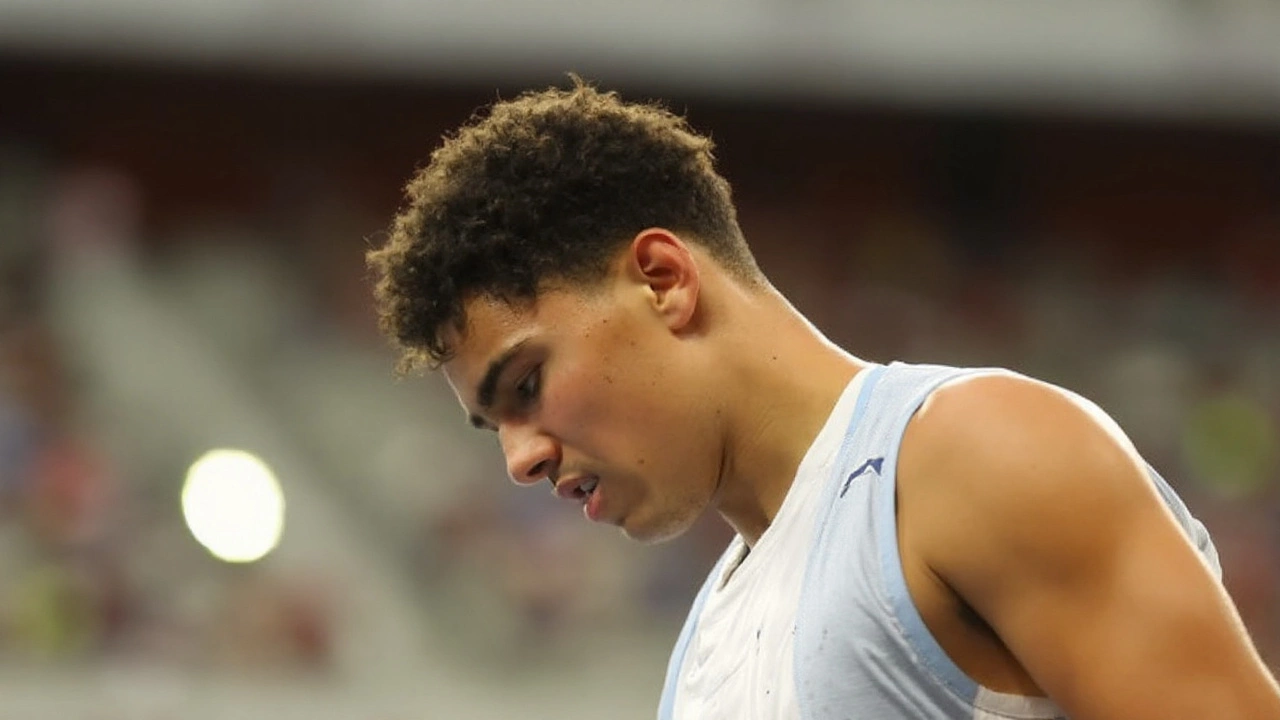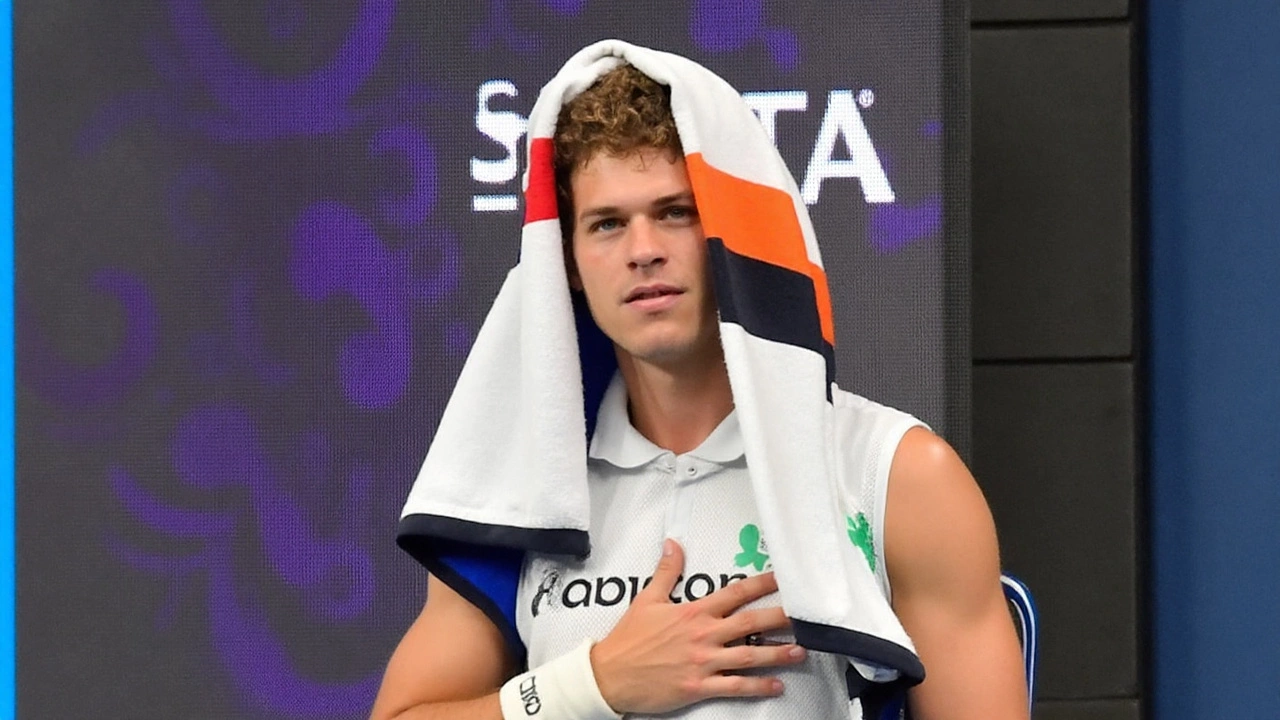What we know — and what’s still unclear
American crowd favorite Ben Shelton shared a short statement acknowledging a shoulder issue and hinting at an early end to his US Open campaign. He offered few specifics: no timeline, no medical labeling, and no detailed explanation of how or when the problem flared. The message was brief, grateful toward fans, and focused on getting healthy.
That scarcity leaves more questions than answers. Was this a precautionary call or the result of acute pain? Is it inflammation from workload or something structurally more serious? Without a full medical note, the conversation turns to context: his high-velocity serve, a packed calendar, and the demands of late-summer hard courts.
- He acknowledged a shoulder problem and addressed fans directly.
- His US Open run is over, with no detailed timeline for recovery disclosed.
- No official diagnosis, scans, or specific treatment plan have been made public.
- Next steps likely depend on symptoms over the coming days and medical evaluation.
For a player who thrives on pace and power, even low-grade shoulder trouble matters. It can subtly sap speed on serve, reduce spin on the forehand, and change the way a player structures points. At a Slam, marginal losses get exposed fast.

Why a shoulder issue hits harder for a serve-first player
In tennis, the shoulder is the engine room, especially for big servers. The serve loads the rotator cuff, the labrum, and the stabilizing muscles around the scapula. When these structures are irritated or fatigued, athletes feel it on contact: a drop in pop, reduced placement, and often a protective change in mechanics that can cascade into neck or back tightness.
Medical labels vary, but the early-stage culprits often look the same: overuse inflammation, internal impingement from repetitive overhead motion, or a fatigued cuff that can’t stabilize through the kinetic chain. The fix almost always starts with rest and targeted rehab before any talk of injections or more aggressive interventions.
For players who hit the serve north of 130 mph, management is a season-long project. Micro-cycles of loading and deloading, manual therapy for the shoulder blade and thoracic spine, and a carefully staged return-to-serve progression are standard. Done right, athletes reclaim pace and confidence without drifting into compensations that invite new injuries.
Shelton’s profile makes this especially relevant. As a collegiate star at Florida who turned pro in 2022, he built his rise on a huge lefty delivery and explosive first-strike tennis. He broke through on the big stage with a deep US Open run in 2023, a stretch that announced him as a new problem for the world’s best. He followed by adding tour-level wins and proving his style works across surfaces and continents.
That style, though, has a tax. Aggressive schedules, heavy serve reps, and the hard-court grind can add up. Late summer in North America compresses travel, practice, and match play. A nagging ache can turn into a limitation. In a Slam, there’s nowhere to hide from that calculus.
So what does a sensible plan look like now? In broad strokes, it goes something like this:
- Short-term offload: dial back or pause overhead work to settle symptoms.
- Imaging only if red flags persist: many cases don’t need it; persistent weakness or night pain might change that.
- Rehab progression: rotator-cuff endurance, scapular control, core-to-shoulder sequencing.
- Serve reintroduction: start with tempo and location, then add speed in controlled blocks.
- Match re-entry: smaller events or carefully chosen draws to rebuild rhythm under lower stress.
Every athlete’s timeline is different. Some bounce back in days if pain was purely inflammatory; others need weeks to rebuild capacity and confidence, especially if they’re tweaking mechanics to protect the joint.
The competitive context matters, too. Grand Slam points shape ranking arcs for months. An early exit or withdrawal can create a short-term dip, but that usually matters less than long-term availability. Protecting the shoulder now preserves the serve — the foundation of his game — for the indoor stretch and the next season’s big targets.
There’s also the mental side. Abrupt exits force quick emotional pivots. Athletes must switch from match-mode to rehab-mode, manage frustration, and resist the urge to rush back just to keep rhythm. The best teams handle this with clear benchmarks, not calendar dates: pain-free serving at controlled speed, repeatable power without next-day flare, and full trust on second serves under pressure.
Context helps here. Plenty of top players have navigated shoulder setbacks and returned to peak. The common thread: conservative scheduling, meticulous rehab, and patience with form. When the serve is your biggest weapon, being whole matters more than being back next week.
For fans watching the US Open, the bummer is obvious. New York loves shot-makers with swagger, and Shelton fits that bill. His presence tilts night sessions and energizes outer courts. Without him, the draw loses one of its great tension-builders: the sense that any service game can end with a lightning bolt.
What to watch next? Three signposts usually tell the story. First, updates from his camp — even small ones — about symptoms easing and practice loads. Second, practice-court sightings: light hitting, then controlled serving, then full-pace sessions. Third, entry lists for the fall swing in Asia and Europe. Players often pencil in tournaments but ultimately decide based on how the shoulder tolerates a full serving day.
Until there’s a fuller medical picture, speculation doesn’t help. What does help: remembering how quickly a shoulder can quiet down with the right approach, and how crucial it is for a power player to be completely right before facing the sport’s best in back-to-back days. If the choice is between weeks now and months later, the smart move is obvious.
That brings it back to the original message. It was short, appreciative, and careful — the kind of note you post when you don’t want to overpromise. For an athlete whose rise has been fast and loud, a quiet pause might be exactly what the season needs.

Arlen Fitzpatrick
My name is Arlen Fitzpatrick, and I am a sports enthusiast with a passion for soccer. I have spent years studying the intricacies of the game, both as a player and a coach. My expertise in sports has allowed me to analyze matches and predict outcomes with great accuracy. As a writer, I enjoy sharing my knowledge and love for soccer with others, providing insights and engaging stories about the beautiful game. My ultimate goal is to inspire and educate soccer fans, helping them to deepen their understanding and appreciation for the sport.
view all postsWrite a comment